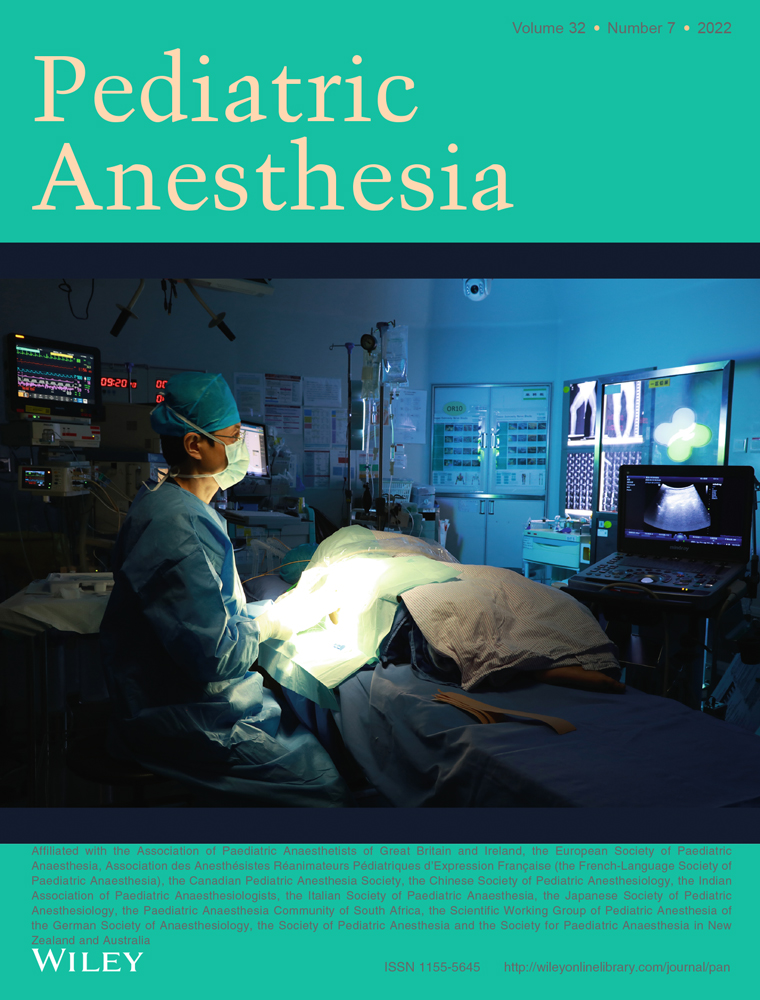Comprehensive risk assessments and anesthetic management for children with osteogenesis imperfecta: A retrospective review of 252 orthopedic procedures over 5 years
Section Editor: Francis Veyckemans
Xiyun Liang and Peikai Chen contributed equally.
Funding information: This work was supported by the Shenzhen “Key Medical Discipline Construction Fund” (No. SZXK077) to MKTT (as PI), the Hong Kong Health and Medical Research Fund (No.07181676) to MKTT (as co-PA), and the “Shenzhen Peacock Plan” to PKC (No.20210830100C) and ZJT (No.20210802658C).
Abstract
Background
Major anesthetic risks arise in orthopedic surgeries for children with osteogenesis imperfecta, a rare genetically inherited condition presenting diverse skeletal issues.
Aim
We aimed to investigate anesthetic risks, including difficult airway, hypo- and hyperthermia, blood loss, and pain, in connection with patient, anesthetic, and surgical factors.
Methods
Both descriptive and inferential statistics were employed to study the anesthetic risks and their predictors. Data of 252 surgeries for 132 Chinese osteogenesis imperfecta patients aged 18 or below were retrieved from the authors' hospital between 2015 and 2019.
Results
Two thirds of the cohort were Sillence type IV patients, with types I, III, and V accounting for 7.6%, 14.4%, and 11.4%, respectively. Video and direct laryngoscopy were used. No case of difficult airway was identified. Due to a careful management strategy, intraoperative temperature varied on average between −0.38°C and +0.89°C from the initial temperature. Fifty-two and 18 cases of hyper- and hypothermia were encountered, respectively. The use of sevoflurane for maintenance resulted in a mean increase of +0.24°C [95% CI 0.05 ~ 0.42] in the maximum temperature. Massive blood losses (>20% of estimated total blood volume) were observed in 18.3% of the cases. Neither intraoperative temperature changes nor blood loss was found to be related to Sillence classification. Regional anesthesia techniques were applied to 72.6% of the cases. Ultrasound guidance was used per the judgment of anesthesiologists or when in case of difficult landmarks. The incidence of difficult regional anesthesia was low (4 out of 252). For postoperative analgesia, 154 neuraxial blocks (including 77 caudal and 77 lumbar epidural) and 29 peripheral nerve blocks were performed.
Conclusion
Anesthesia for children with osteogenesis imperfecta undergoing complex orthopedic procedures was challenging. Proper anesthesia planning was essential for both intraoperative management and postoperative analgesia. Age, surgical duration, and use of sevoflurane for maintenance impacted the intraoperative temperature most, and massive blood loss was not uncommon. The risks for airway or regional anesthesia difficulties were low. Pain scores could be controlled to be ≤3 via multiple techniques.
CONFLICT OF INTEREST
The authors have no conflicts of interest to declare.




